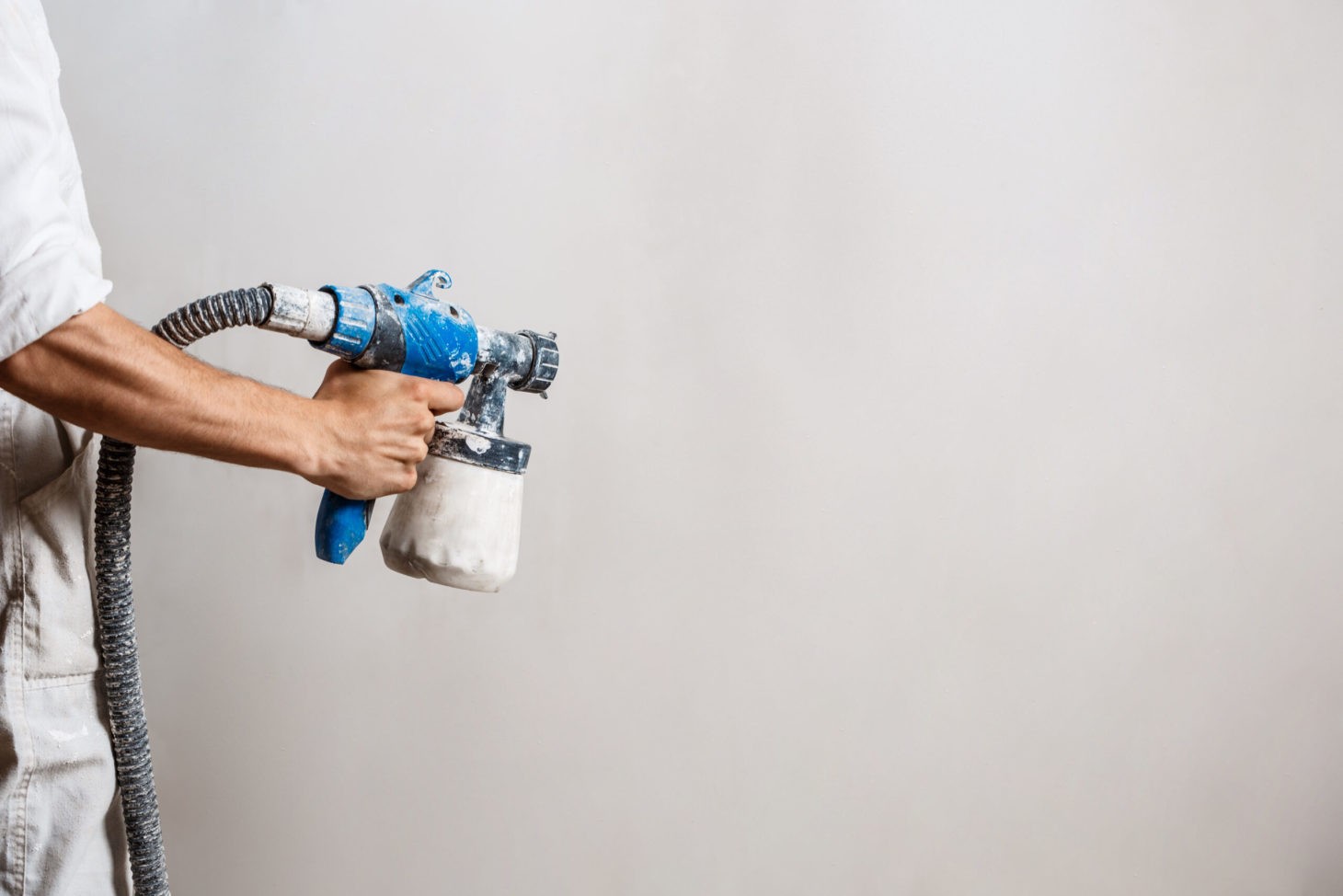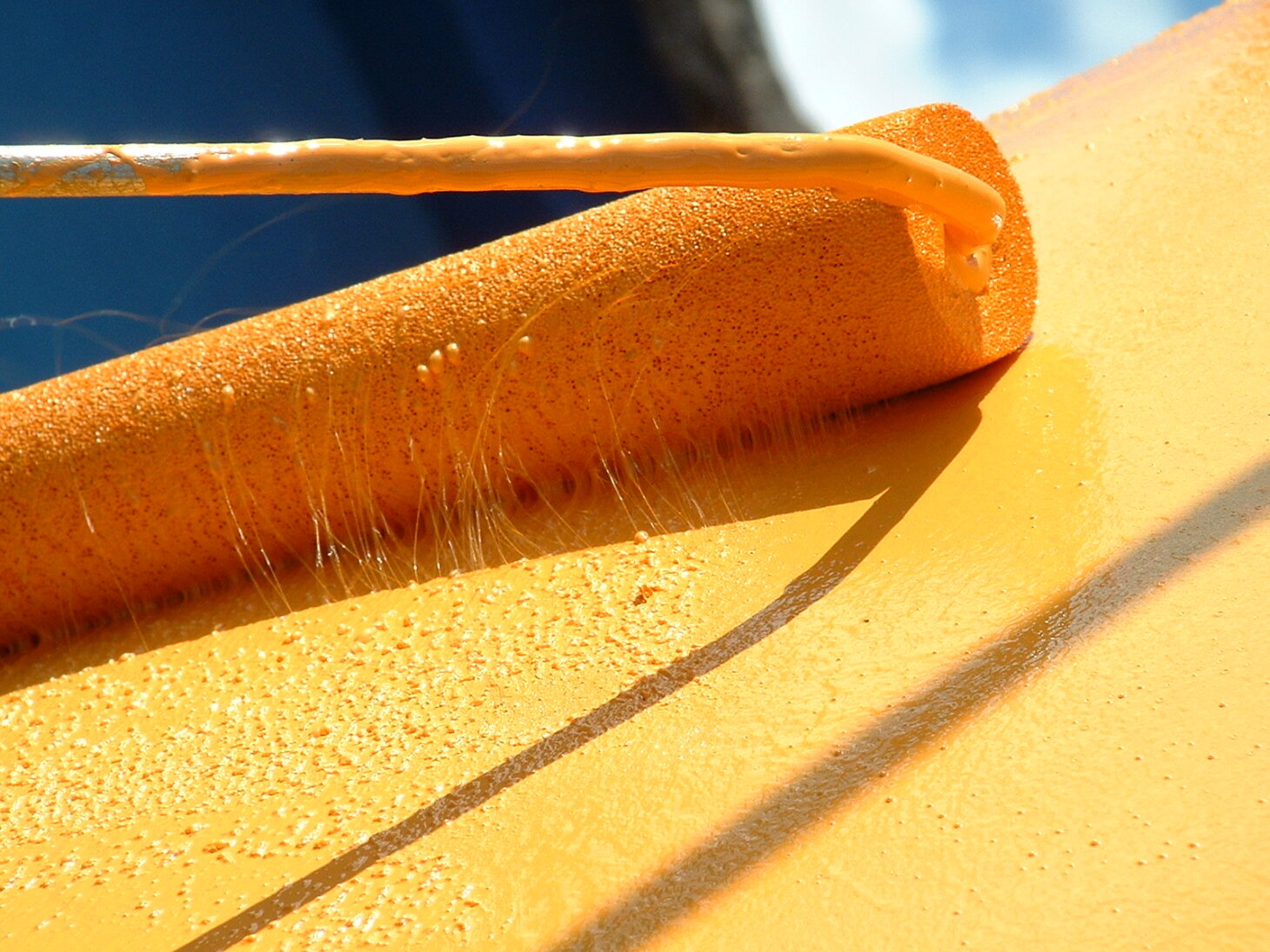Prepare to paint your house, do you? One of the first thoughts that may come to mind when preparing to paint, whether indoors or outside, is: Which is preferable, spraying paint or rolling paint?
The pros and cons of spraying paint over rolling paint are numerous and detailed. In general, rolling paint is the most approachable for beginners. While applying spray paint requires extensive preparation, the process is quicker. To stop overspray, a lot of heavy taping and masking is needed. Additionally, a sprayer applies paint more consistently than a roller.
For painting interior walls, a roller works well. Both interior and exterior walls can be treated with a sprayer. Additionally, a sprayer can be used to paint brick, concrete, and other tough surfaces. The paint wouldn’t be applied evenly using a roller, and rolling on those surfaces would be too difficult.
Spraying reduces labour costs by saving time.
The main benefit of paint sprayers is speed, which is why many painting businesses employ them. Faster operations need fewer man-hours, which lowers costs for the consumer.
Although spraying involves additional preparation and material to mask off areas and prevent overspray onto windows, doors, concrete, etc., it is still effective.
But completing a task quickly requires more than just being inexpensive, and going rapidly results in a more unified and aesthetically pleasing final product. You’re more likely to see lines and marks from places where one area dried before the next could be applied if you move more slowly.

Rolling won’t dramatically increase how long your paint job lasts
The advice on how frequently to repaint your home remains the same, whether rolled or sprayed. In either case, the paint can only keep your residence safe for a limited time. In some ways, spraying might even be more durable than rolling since, when used correctly, a paint sprayer can coat surfaces in cracks much more effectively than a roller.
Even after spraying, rolling, and brush
Back rolling is a technique used by professional painters to guarantee that paint is pushed into deeper surfaces, especially those slightly damaged by the weather. To apply the paint evenly to all surface angles, it is sprayed on first and then quickly covered with a roller.
It would be tough to find a home that did not require a brush or roller for trim, even if back rolling is not used. The simple result of not using a sprayer when you can is that you have less time to devote to the detailed work, which already takes a significant amount of time.
Rolling cannot match a sprayed surface’s finish.
No matter the level of skills you have or how well you use your instruments, a roller cannot produce the same smooth finish as a sprayer. Particularly with doors, this is audible. A door can be ruined by someone who isn’t skilled with a sprayer, but that shouldn’t happen if you’re dealing with a qualified painter.
Rolling and spraying can both be done incorrectly.
Spraying might go awry if the painter approaches the project from several angles and fails to consider the direction in which the paint will be sprayed. Using an improper method to start and stop the paint flow will also result in problems.
However, rolling is not always successful. You could argue that a roller has more potential for error than a sprayer. When using a roller, user error is more significant since the technique is more important (if you want to eliminate lines in your finished project), and the rollers wear out. They need to be checked, and it’s more physically taxing.

Situations in which spraying is inappropriate
In some cases, painting a house via spraying is not the ideal option. This might apply, for example, in confined areas near your neighbour’s property where it would be difficult to mask off their home or in windy weather. However, these situations are quite uncommon and frequently only apply to specific areas of a property.
Quick Comparison To Start Things Off
- Time spent preparing: Rolling requires far less setup time than spraying because there is no need to set up the spray equipment, add paint to the reservoir, connect hoses and connections, etc. It doesn’t even come close if you factor in all the masking that spraying can call for.
- Application Time: The extra time required to apply paint will negate any time you saved during preparation. With a paint sprayer, you can paint a wall much more quickly than a roller, regardless of the preparatory time.
- Painting Accuracy: To ensure painting accuracy while spraying inside walls, mask off any surfaces you don’t want to have painted, such as the ceiling, windows, door, and floor. Consequently, rollers are more precise, but you normally need a little brush to finish corners.
- Spreads Paint Evenly: This one is difficult to predict. Although both rolling and spraying spread paint rather uniformly, both have the potential to overlap unevenly.
- Cleaning: Cleaning your roller brushes and equipment can be labour-intensive, but it’s not nearly as difficult as cleaning the spray gun, reservoir bottle, and all of the gun’s accessories.
Conclusion
Depending on the precise surface, many professional painters combine spray painting, roller painting, and brush painting. Each method is quicker but less accurate than before, except for the brush. That means roller painting is appropriate for inside walls where you need to prevent getting paint on other surfaces. Spray painting is good for broad areas where you don’t need so much accuracy, like an outside wall, and brushes aid you with the detail work.









